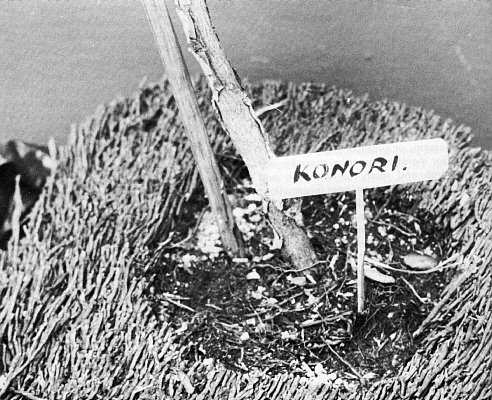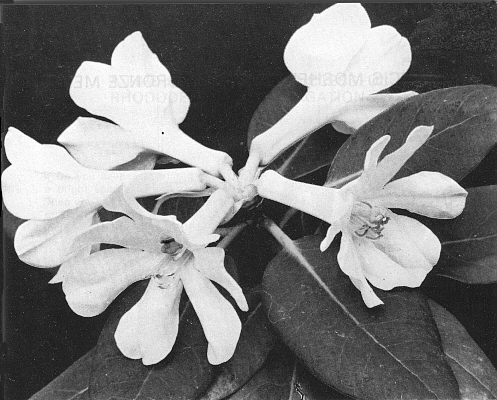Rhododendron konori
Arthur W. Headlam, Bentleigh, Australia

|
|
R. konori
Photos by Arthur Headlam |

|
|
R. konori
Photos by Arthur Headlam |
In February 1971 I was given a plant of the West Irian form of
R. konori
. It was growing in an eight inch terra cotta pot in a mixture of sand, peat moss and sieved fern fiber, but its growth was very slow and it lacked vigor.
In summer 1972 temperatures exceeded 100°F for several days and
R. konori
, although in a shade house, suffered fairly severe leaf scorch and almost completely defoliated. It was left in the pot until spring 1973 in the hope that it would eventually survive, but from its general appearance this seemed most unlikely.
As a last resort I decided to transplant it into a tree fern log, and as the root system was too large to follow the usual procedure as described in the Winter 1976 Bulletin, a hollow was formed in the log and
R. konori
was planted in it in a mixture of fern fiber and peat moss. The fern log was then placed in a shallow tray of water forming a reservoir of some two inches deep and the log thoroughly watered. By this procedure of using a shallow tray with a continual supply of water, the roots, contrary to their usual practice of remaining in the 'mix', actually made their way into the fern log and the plant started to show signs of revival. New growth eventually appeared and to my considerable surprise and delight in late 1975 three flower buds appeared, but their progress was very slow. In February 1976 the buds began to expand and by the end of the month the first two buds, which reached the size of some three inches long by one and a half inches in diameter, opened, the first with five flowers and the others with four. When fully expanded the flowers measured 3 1/2 inches across the lobes and were some three inches in length overall, and highly perfumed the surrounding garden. The third bud did not open until March 15 and its flowers were similar in size to the first two.
I endeavored to 'self' the flowers, but pollen was either in minute quantities or non-existent. Neither did pulverizing the anthers bring any result even though the stigma was viscid and sticky. The photograph illustrates the first flower, seven inches in diameter overall and gives an indication of the beauty of this species, in this case pure white without any trace of coloring whatever.